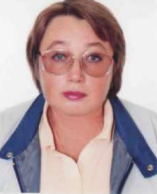
Section Collection Information
Dear Colleagues ,
The library is an integral part of the history of the development of human society, its culture, a bridge between the past and the future. One of the main functions of the library is the storage and transmission of book cultural heritage to future generations.
The study of the history of libraries of educational institutions, as well as private book collections, is an insufficiently researched topic in the reconstruction of the cultural (book) heritage of the late 19th and early 20th centuries, the determination of historical and cultural value and their introduction into active practical use.
For scientific research, the object of study is determined, a methodology is drawn up - a research program. The object of scientific study in our case is the library of an educational institution or a private book collection.
The research program examines the prerequisites for the organization of a scientific institution and the time frame for its functioning, determines the founders and subordination, as well as the role of the individual in the organization of this educational institution.
Then the composition and quantity of the book fund are specified, which reflect the subjects of teaching.
The ways of acquiring the library's book fund are traced (donation, purchase, exchange and other forms of replenishment). At the same time, accounting (inventory) of the book fund and maintenance of accounting and inventory books are carried out.
The next stage in the formation of a book fund is the system of arranging literature in the library of an educational institution.
One of the important stages of studying a library is the creation of a reference apparatus for the book collection (catalogues, card indexes, lists).
An important factor in the work of the library is serving readers with literature from the collection (right of use and operating hours).
The methodology determines the system of library reading rooms (their number and the presence of specialized - subject reading rooms) of the educational institution.
Particular attention should be paid to the safety of the book collection in the book depository, its equipment (book shelving system, the use of improvised means to make it easier for library staff to serve readers).
Attribution of provenances is an important source, filled with the richest factual material of the time and place of the library’s existence and the ways of forming book collections. Provenances (superexlibrises, exlibrises, seals, stickers, marginal records, etc.) in most cases are the determining factor for the reconstruction of private book collections that have been lost today or have been dismantled.
When studying the history of a private book collection, the methodology for studying the library of an educational institution is used, but it is necessary to further study the type of activity of the owner of the book collection and its location.
I hope that this methodology for studying the history of libraries of educational institutions and private collections will allow researchers to add the new information received to the treasury of the cultural heritage of their country.
Research articles and reviews in this area of study are welcome.
We look forward to receiving your contributions.
Dr. Zoya Afanasyeva

